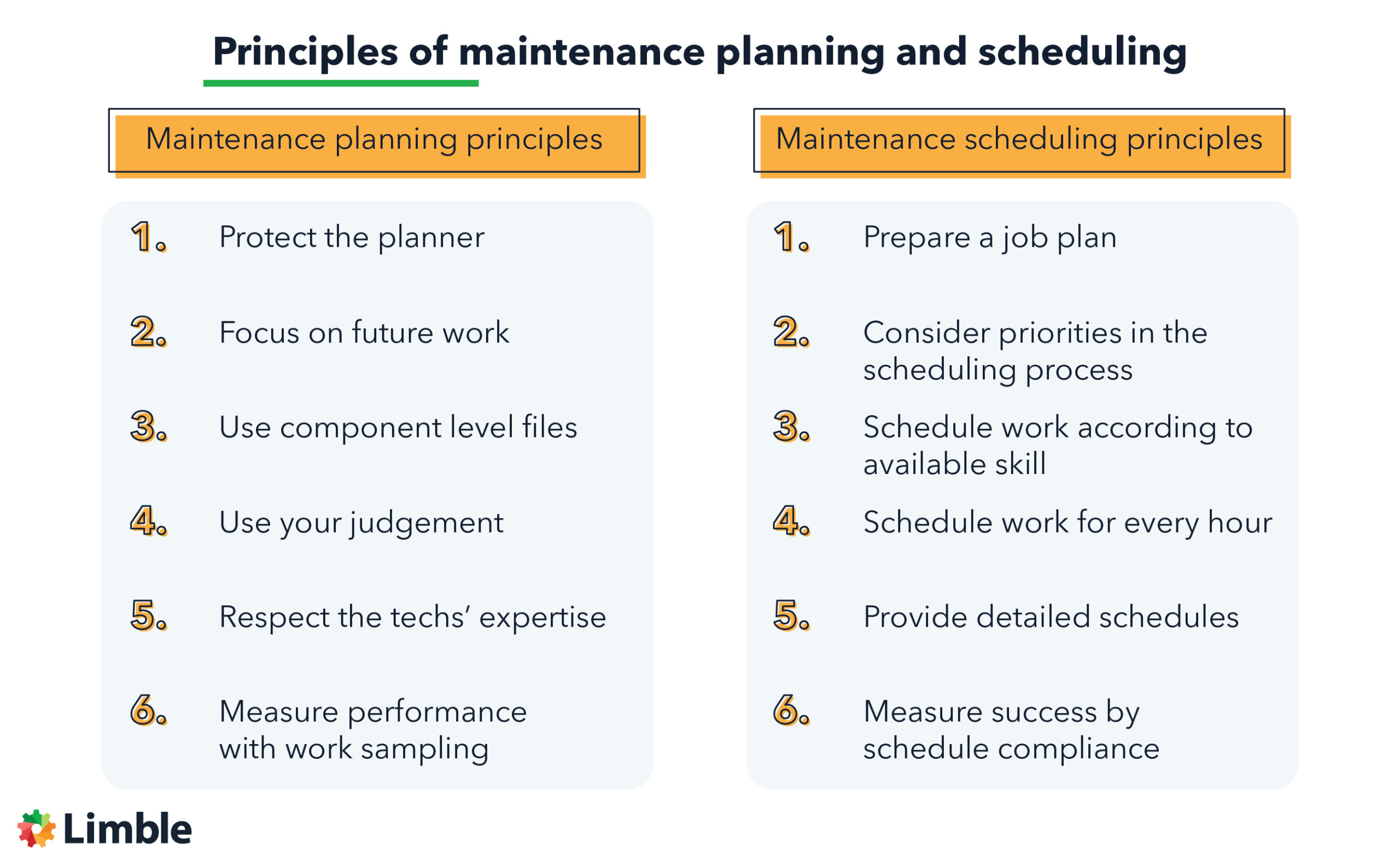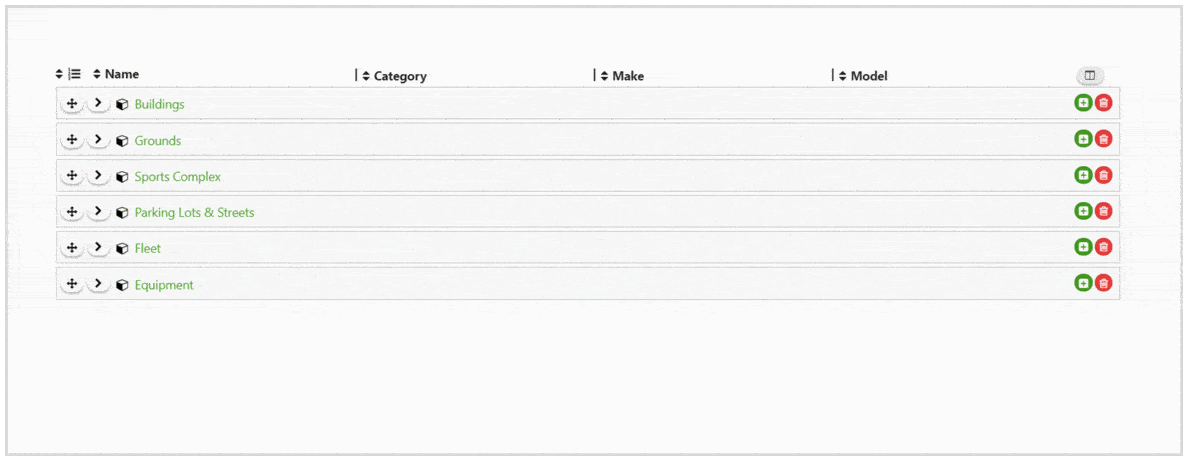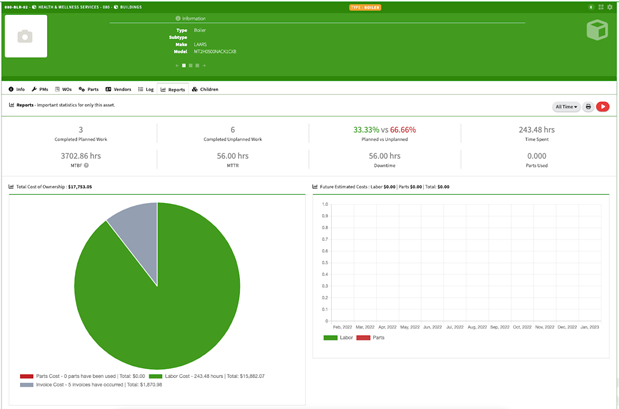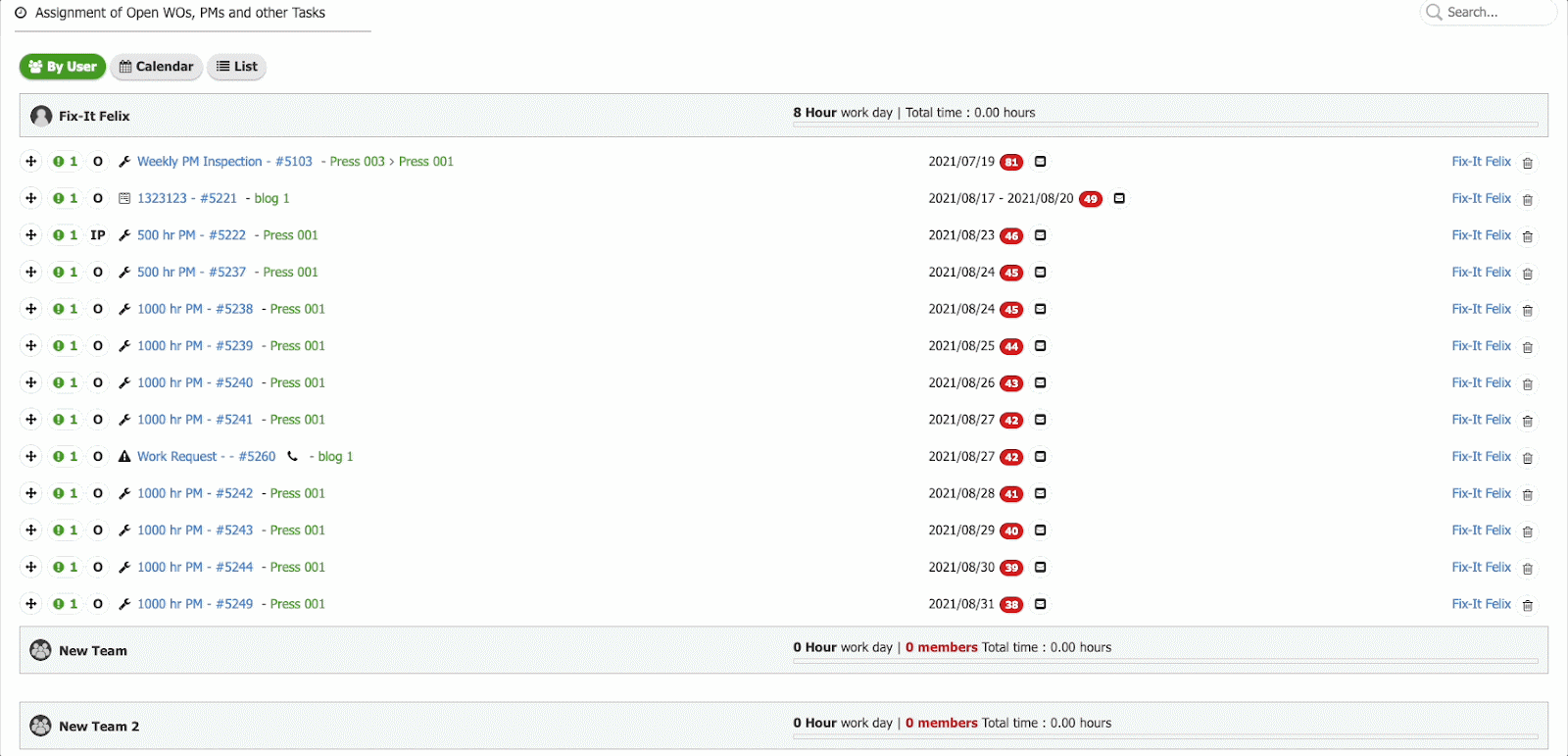Anyone who’s ever single-handedly tried to prepare Thanksgiving dinner knows that pulling off any major project won’t work without a plan. Maintenance works the same way.
Maintenance planning and scheduling is the core of setting up an effective maintenance program. It’s your roadmap to success.
This article covers the core principles of maintenance planning and scheduling, and how using a CMMS will make the process much easier.
What is maintenance planning and scheduling?
Maintenance planning and scheduling is a 2-for-1 concept. Let’s break down each idea separately.
Maintenance planning
The purpose of maintenance planning is to create a roadmap-for-success of the project. This includes:
- Writing out instructions
- Securing tools/parts
- Procuring vendors
- Setting quality controls
- Managing breakdowns
Effective maintenance planning aims to identify problems before they happen and design a plan of action with those caveats built in.
Maintenance scheduling
Maintenance scheduling refers to the actual timing of a project. It determines when the project should begin and end and who is doing what maintenance work, when.
Scheduled maintenance should attempt to:
- Schedule tasks according to highest priority
- Schedule the most amount of work possible with the available resources
- Perform as much work in-house as possible
Benefits of maintenance planning and scheduling
“Fail to plan; plan to fail,” as they say.
In other words, even a project with the best of intentions is doomed to veer off track without a good plan in place. Here’s a look at what makes maintenance planning and scheduling worth your time.
Higher productivity
With maintenance planning, there are two key areas where you can expect to see increased productivity:
- Your team: With a good plan, your team can stay busy fulfilling work orders at all times. You’ll build a backlog of work into your plans, so there’s always something next.
- Your equipment: Better planning means you’ll have work scheduled for your team and your equipment at all times. You will have less gaps in your schedules and get more done.
Eliminate waste
Waste is always a good thing to cut down, where possible. With maintenance planning & scheduling, your maintenance department can eliminate:
- Wasted time: Thorough job plans mean more wrench time overall. As we mentioned above, planned work results in higher productivity, and that eliminates wasted time in the meantime.
- Wasted parts: When work is planned, you’ll know ahead of time which spare parts your projects require. That means you’ll have the right parts on hand and parts that are earmarked for certain projects won’t get used where they shouldn’t.
- Wasted costs: When you eliminate wasted time and wasted parts, you reduce costs by default. When your resources are used more efficiently, you save money and can even drive more revenue for your company — every maintenance manager’s dream.
Higher reliability
With maintenance planning and scheduling, preventive maintenance is maximized. Preventive maintenance is a cornerstone of effective asset management and increases equipment reliability over the asset’s lifecycle.
The Essential Guide to CMMS
The Essential Guide to CMMS

Principles of maintenance planning and scheduling
As mentioned above, maintenance planning and scheduling is two concepts combined into one. Both maintenance planning and maintenance scheduling have their own set of best practices. Let’s cover them individually.

Maintenance planning principles
- Protect the planner: The maintenance planner (or planning crew) should be separate from the maintenance crew, so that they can focus on planning, and not get pulled into day-to-day maintenance activities.
- Focus on future work: Maintenance planning is most effective when the planner can focus on the future, and not get pulled into small details of maintenance jobs. The planner’s job is to keep projects moving forward by planning new work for the future.
- Use component level files: An effective maintenance plan requires details. It’s not enough to say you have 10 HVAC units. You need to know the site, the buildings, and the position where they are located. Beyond that, each HVAC unit has components and parts that need tracking. Component level files keep track of all the moving parts (pun intended), so when it’s time to do maintenance you have all the information you need.
- Use your judgment: Plan work with the resources you have available. Anticipate potential delays, safety challenges, quality issues. Build your plans while considering these caveats, and your technicians will be able to complete work more smoothly.
- Respect the techs’ expertise: The maintenance planner/scheduler plans the work; the technicians carry it out. Your technicians are highly skilled at what they do — leave them to perform the repairs while you stick to maintenance management.
- Measure performance with work sampling: To plan effectively, measure the time it takes technicians to complete maintenance tasks. This will give you an idea of how long it will take to finish projects and help you plan accordingly.
Maintenance scheduling principles
- Prepare a job plan: Your job plan should include the number of technicians, skill level, types of skills, and the time it will take to complete the job. Map out each job role, what they’ll do, and what equipment they will need.
- Consider priorities in the scheduling process: Whichever projects are highest priority should be scheduled first, and also have appropriate resources allocated to them, including time, skill, and equipment.
- Schedule work according to available skill: If you have a team of experienced technicians who are generally self-lead, you might expect them to complete work quickly. If your crew is new to the field, work may take longer. Plan based on the skills, time, and budget you have at your disposal.
- Schedule work for every hour: If you want the project to move forward, you don’t want dead time. Schedule work for every available hour that technicians have, so they are never stopped in their tracks. This way, they always know what’s coming next. (It’s also why it’s important to track how long it takes them to do work).
- Provide detailed schedules: Generally, planners should provide detailed plans to maintenance supervisors. Sometimes though, a crew leader will be able to help inform plans to optimize the resources at hand. The team leader can take the weekly schedule and dole out tasks where they’ll have the most success.
- Measure success by schedule compliance: If your projects are running on time, that means you created a great schedule. Your estimations were correct and your allocation of resources were adequate. Chances are though, work will not be on time all the time — you will have to adjust as you go along. Realistically, this will always be an area for continuous improvement.
Phases of maintenance planning and scheduling
Believe it or not, you need a plan to roll out a plan. To successfully execute on a maintenance plan and schedule you’ll need to roll it out in phases.
Phase 1: Gather support
A change in workflow will require support from up and down the ladder — especially if you are transitioning from reactive maintenance to proactive maintenance.
Make a business case to management that maintenance planning will help save money and increase uptime in the long run.
Let your team know that implementing a planning process will help make their work smoother, more efficient, and predictable.
Phase 2: Diagnose inefficiencies
Work to identify the root cause(s) of the problems you are facing in your maintenance department right now. Where do technicians face the most bottlenecks in their work?
Here are a few examples:
- Equipment downtime skyrockets during the extra-busy production months, which slows technicians down.
- The work order software (or lack thereof) does not integrate with the work order tracking system, so techs are often hunting down additional information.
- Technicians are unclear on who should be completing which repairs, and in what order.
Phase 3: Create thorough work plans
Work plans are only effective if they are clear and thorough. To plan well, your maintenance organization needs:
- Thorough documentation on assets, spare parts, and other equipment
- Standard operating procedures
- Job plans that define the scope of work, work roles, coordination with other departments and vendors, etc.
Phase 4: Implement your work plans
Now that the job plans are done, it’s time to execute. Here’s what you need to do:
- Write out your work schedule, down to the hour
- Figure out how work will be divided among your team and vendors
- Define job roles for each of your team members and assign work
- Verify you have all the parts and equipment to complete the work
After all that — get to work!
Phase 5: Evaluate your progress
Once you’ve started on your maintenance projects, it’s important to regularly review their success.
Remember, you’ll measure the effectiveness of your plans with schedule compliance — if your work is on time, you nailed it! If not, here are some clues your work plans need some tweaking:
- You are facing unexpected shutdowns
- Performance metrics for equipment output are lagging
- Technicians do not have spare parts on hand that they need to complete the work
- Team members are confused about work priority
Ultimately, these types of challenges will slow you down. If you’re encountering these problems, it’s time to go back to your original job plans and reevaluate.
Phase 6: Maintain
Provided your work is on time and everything is (mostly) going to plan, the hard part is done!
Now, all you need to do is continually review your KPIs and schedule compliance to make sure everything continues to run smoothly.
Expect to make small tweaks along the way, but go ahead and give yourself a pat on the back for a job well-done.
CMMS features that improve maintenance planning and scheduling
A CMMS (computerized maintenance management system) is your best friend when it comes to planning and scheduling maintenance work. Here are some CMMS features that will help your work sail smoothly.
Intuitive asset management
It’s great to have a list of equipment, but that alone is often not enough information.
Component level files include work order histories, equipment registry, parts registry, and more (this is virtually impossible without a CMMS).
In Limble, assets are easily organized in a hierarchy according to their location and/or purpose. Each asset includes work history, manuals, related parts, vendors, and more so you never have to go digging to find that information.

Automatic maintenance KPIs
It’s important to track the effectiveness of maintenance as you go along — which is tough to do without the data which can be collected manually or automatically, based on your setup. Usually, it’s a mix of both.
If your maintenance work is documented in a CMMS, you can have access to the data you need to make informed decisions in the future.
In Limble, maintenance KPIs are tracked automatically with every work order that’s completed.

Productivity reporting
Do you know how long it takes your techs to complete a task?
The more accurate your measure of the time it takes to complete individual tasks, the more accurate your maintenance scheduling can be. It could mean a difference of weeks to complete a project, if you miscalculate.
In Limble, it’s easy to set up a dashboard to track employees’ performance, so you can accurately gauge how long it takes your team to complete work).

Work order management
Remember all that talk about scheduling work based on priority? Well, it is not always as black-and-white as we want it to be.
Sometimes, in the midst of work, priorities change. If all your job plans are on paper, this will get confusing fast.
A modern CMMS helps streamline your entire work order management processes. Inside Limble, tasks can be easily re-prioritized with a few clicks. And if changing priorities means that someone else has to perform the work, you can simply drag-and-drop tasks to the right people (like you see below).

Tips for effective maintenance planning and scheduling
So far, we’ve been through the best practices that will make maintenance planning and scheduling work for your organization. Now you’re ready for the secret sauce — tips that will make your maintenance program “world class.”
Tip 1: Choose your planner/scheduler wisely
You want to choose a planner/scheduler who has management skill & experience. Most likely, this will be a more senior technician with several years of experience under their belt.
Training the planner also helps. Make sure they understand how to use the software needed to keep things on track.
Tip 2: Collaborate with purchasing department
Planning maintenance projects without ordering necessary parts is a waste of time. If technicians don’t have the parts they need to do their work, they can’t do the work.
Include your purchasing department in maintenance planning meetings so they can facilitate part orders at the right time.
Tip 3: Forward schedule for an agreed-upon time period
Schedule work 8-12 weeks out at a time. Once work in one phase is underway, begin scheduling the next phase.
This keeps the team busy for a sizeable chunk of time, but it is still a manageable span of time for the planner/scheduler plan for.
Tip 4: Standardize procedures as much as possible
Clear instructions are always important.
The next level to that is creating repeatable processes that your team can follow every time they have a repeated task.
This saves your time and theirs, and helps create a stronger team in the long run.
Optimize your maintenance work with a CMMS
We won’t say that effective maintenance planning and scheduling isn’t possible without a CMMS — but it sure is a lot more difficult.
A CMMS can save you money, increase productivity, and track your most important maintenance data. Limble is here to help — set a demo or start a free trial.
